A British RC-135 Rivet Joint, the RAF’s premier signals intelligence aircraft, has once again been deployed on a critical reconnaissance mission over the Black Sea, monitoring Russian military movements amid heightened tensions in the region.
The flight, which took place under the watchful eye of both NATO and Russian air defence networks, saw the Rivet Joint traverse international airspace along the Ukrainian coastline, gathering crucial electronic and communications intelligence.
The RC-135W Rivet Joint, a highly modified Boeing aircraft, is one of the most sophisticated intelligence-gathering platforms in the world. Packed with an array of advanced sensors, it has the ability to intercept and analyse enemy communications, radar emissions, and electronic signatures, building a real-time picture of battlefield conditions.
During this latest mission, the Rivet Joint is believed to have monitored Russian naval activity in the Black Sea, as well as the movement of air defence systems and military communications along occupied territories in Crimea and southern Ukraine.
In previous missions, Russian Su-27 and Su-30 fighter jets have been scrambled to shadow or intercept NATO reconnaissance flights over the Black Sea. While this latest operation appears to have proceeded without a direct confrontation, past incidents—including a Russian jet releasing flares near a British surveillance aircraft in 2022—highlight the inherent risks involved in such operations.
This isn’t new
This isn’t a new occurrence; in fact, it is quite routine. The UK has been gathering intelligence about Russian forces since long before the invasion of Ukraine. It should be noted that these flights are designed to be visible so that the public and Russia know they’re happening. If it were a secret, I would not know. Also, for those remarking, ‘this isn’t new’, that’s right, but people only know this often happens because it is reported often.
What does the RC-135W do?
The RC-135W Rivet Joint and its sensors are designed to undertake ‘signals intelligence’ missions. In other words, they ‘soak up’ electronic emissions from communications, radars and other systems.
According to the Royal Air Force website, the RC-135W Rivet Joint is a dedicated electronic surveillance aircraft that can be employed in all theatres on strategic and tactical missions. Its sensors ‘soak up’ electronic emissions from communications, radar and other systems.
“RC-135W Rivet Joint employs multidiscipline Weapons System Officer (WSO) and Weapons System Operator (WSOp) specialists whose mission is to survey elements of the electromagnetic spectrum in order to derive intelligence for commanders.”
The Royal Air Force say that Rivet Joint has been deployed extensively for Operation Shader and on other operational taskings. It had been formally named Airseeker, but is almost universally known in service as the RC-135W Rivet Joint.
The UK operates three of these aircraft.
Image Airwolfhound, CC BY-SA 2.0, via Wikimedia Commons.


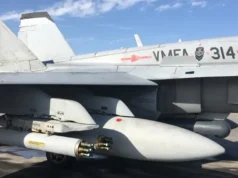

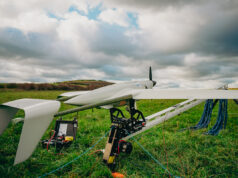
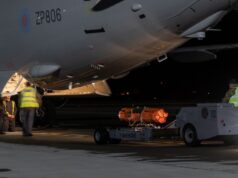
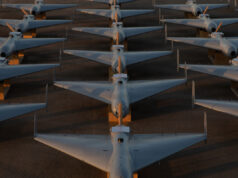
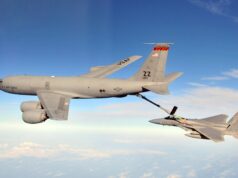
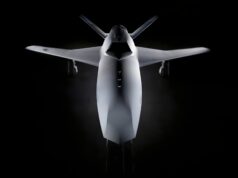

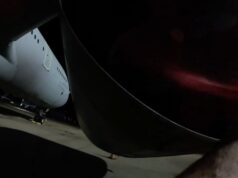
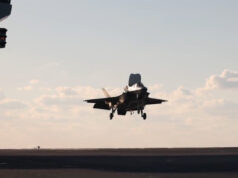

70 year old design !
“Trigger’s Broom” style.
lol
Ship of Theseus.
Ha, “Cutty Sark” springs to mind.
I will delve into that, when sober
It will be interesting to know what they are looking at, as they would have to be a very long way from the front line, considering the size of Ukraine. I guess the black sea region but that isn’t currently active, I wonder if Ukraine is concerned a new front might open.
These flights are everyday events and it’s not just the UK that does it, these flights have been ongoing for years now and mostly show up on the Flight tracking apps.
They gather as much intel as possible whilst staying in international airspace or other friendly nation’s teritorial areas.
Quite what they are monitoring is kept secret as is what they do with the info.
It’s not just Ukraine either, recent ops over the Eastern Med have been ongoing too.
“Big Brother is always watching”.
Not that we will ever find out, but I wonder how much of this is just training missions and how much is actually useful. Back when Russia was pushing in the black sea region I’m sure super useful, but not so sure now.
Not so much a new front…
But the orcs are moving more soldiers and resources into Zaporizhia and Kherson Axis. I see another major offensive forming
And Pokrovsk further up is again in a dangerous situation
Fundraisers now need more equipment for the frontline
Crimea is a logistics route, so the RAF is doing its usual intelligence gathering
Ukrainian drones and missiles hammer it all the time
“these flights are designed to be visible”
Regardless of whether they are or not, an RC-135 Rivet Joint should have a couple of Typhoons riding shotgun. We only have 3 of them, after all.
Just in case the Russians should be so unsporting as to want to shoot a particularly visible one down. In an active war zone. Accidentally……of course.
They do have Typhoon escorts wh3n operating over Ukraine. They also have a very capable defensive aids system.
Robert, so they fly over Ukraine? Really? Within Ukraine airspace? Strong chance they would be shot down by the Orcs.
Genuine but probably stupid question 😃
How practical would it be to transfer all of the tech from this airframe to a more modern an efficient aircraft? I’m not talking about upgrading or changing the equipment in any way just transferring it to a new air frame.
Surely the next air frame is likely to be unmanned in which case that would change everything.
The realityis, the UK replacement for the 3 no Nimrod R1 is to buy from the US, 3 of their 20 Rivet Joint aircraft. This is a continuously developed platform and keeps up with US requirements. The frames are rather like Merlin, stripped and rebuilt. I doubt that 3 stand alone home built aircraft would be better and certainly much more expensive.
There are modern alternatives to the Rivet Joint. The RAAF’s Peregrine is a SIGNIT, ISR and EW platform built on a Grumman Jetstream long range business jet. The first of 4 is in the final stages of testing for delivery to the RAAF in late 2025. Automation and miniaturization plus increased computing power allows Peregrine to deliver the same or improved capability in a smaller package with a more reliable airframe.
‘including a Russian jet releasing flares near a British surveillance aircraft in 2022’. Is this a different incident from the Russian Su-27 firing missiles at RC-135 ZZ664 on 29th September 2022 as widely reported subsequently? And as the missile release was said to be ‘beyond visual range’ I’m not sure how that could be said to be ‘near’. Or has the interpretation of the incident from the RAF/MOD changed in which case please report it?
Are these flights still accompanied by Typhoons as escorts? These were added after a SU-27 fired two missiles at a Rivet Joint back in 2022: thankfully one missed and the other malfunctioned completely.
The joint US /UK service upgrade agreement was renewed in 2021 and runs through till 2035, so no one is in any rush to replace them yet. What may spark them to do so is the impending replacement of the remaining KC-135 by more KC-46, which is now being accelerated after they ditched their Competitive Tanker competition for more of the same.
Scarey thing is the last KC-136 was delivered in 1965 so 70 years old by 2035 !
Possibly the rivets are not doing the same air miles per year as a commercial airframe.
Now for something completely different
Sometimes headlines can be misleading SKY World headline in its internet form this morning Sat 26th
“Pandeminium on Southwest Airlines over Burbank California carrying 67 persons aggresively avoided British fighter jet in near collision which injured 2
Thoughts of a F35B training from Edwards AFB but at the end of the article it turns out to be a Hawker Hunter Mk 58 (ex Swiss AF) who we exported a 100 to 1958
Maybe with a display team or privately owned?
Apologies – Misread not carrying 67
Trouble is that the Hunter is small and quite fast.
So not terribly visible at fast closing ranges.
Does anyone use them in the aggressor role anymore?
Flying over London then!